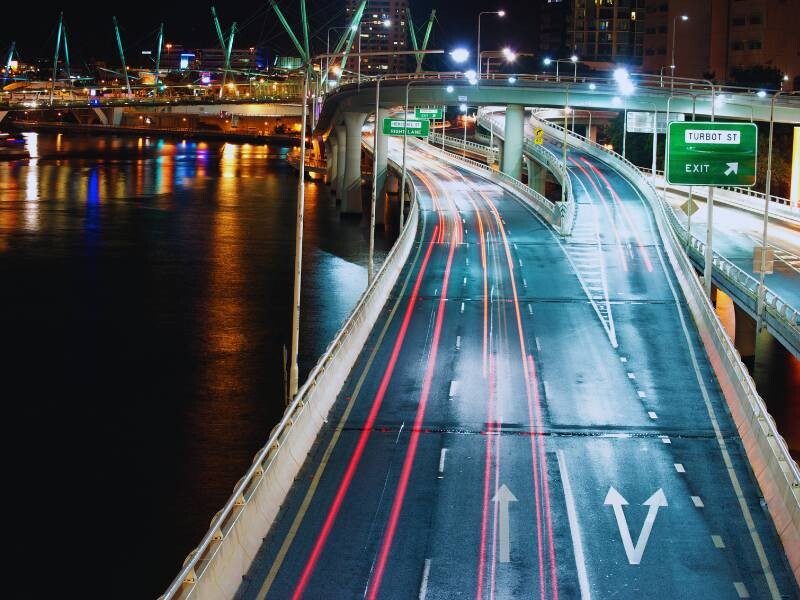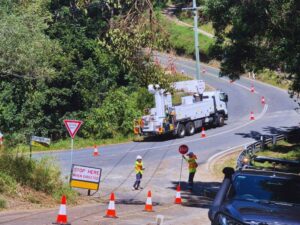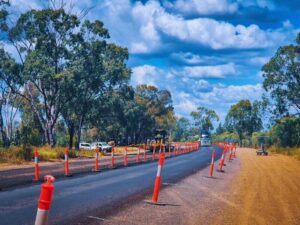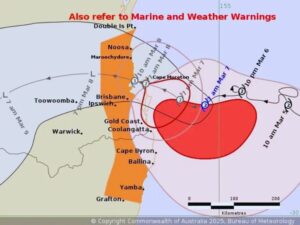Traffic control is essential to maintaining the safety and efficiency of road networks, but the strategies and techniques used can differ significantly between daytime and nighttime operations. Both settings come with unique challenges and safety requirements that require tailored approaches for success. In this blog, we’ll explore the specific considerations for day and night traffic control, examining the techniques, challenges, and best practices that traffic control teams employ to keep both workers and road users safe.
The Importance of Time-Specific Traffic Control
Traffic management strategies are deeply influenced by the time of day. Daytime traffic control typically benefits from natural lighting, but it also comes with higher traffic volumes. Conversely, nighttime traffic control often has reduced traffic but requires specialised lighting and heightened safety measures due to limited visibility. Choosing the right time for roadworks depends on factors like traffic density, community impact, and the scope of the project.
Daytime Traffic Control: Benefits and Challenges
Traffic control during the day brings distinct advantages, but it also presents specific challenges that require careful management.
Higher Traffic Volumes
Daytime operations generally coincide with peak traffic periods, especially during the morning and afternoon rush hours. Traffic controllers must manage high volumes of vehicles, particularly on major roads, which may lead to congestion and increase the risk of accidents. This necessitates more complex planning to minimise disruption to commuters and maintain traffic flow.
Visibility and Natural Light
Natural daylight enhances visibility, making it easier for drivers to spot roadwork signs, barriers, and traffic controllers. For traffic control teams, working in daylight reduces reliance on artificial lighting, which can simplify operations. However, bright sunlight can sometimes create glare, obscuring signs and signals, especially if not placed in optimal positions.
Increased Pedestrian Traffic
Daytime roadworks often mean higher numbers of pedestrians, cyclists, and other vulnerable road users around construction sites, particularly in urban areas. Managing pedestrian traffic is crucial to maintaining safety and minimising interruptions. Traffic controllers may set up designated pedestrian paths and additional signage to guide foot traffic around the work zone.
Techniques for Effective Daytime Traffic Control
Traffic control teams use specific techniques to address the challenges associated with daytime roadwork:
- Clear Signage and Barriers: Clear, highly visible signage is essential to guide drivers and pedestrians. The use of standardised signs and cones helps alert road users to changes in traffic flow, promoting safe movement around the worksite.
- Advanced Warning Systems: Installing warning signs well before the work zone allows drivers ample time to adjust their speed and navigate the site safely. Using reflective materials enhances visibility in shaded or high-glare areas.
- Lane Closures and Diversions: To manage high traffic volumes, traffic control teams may set up lane closures or temporary diversions. This can help to reduce congestion and limit the risk of accidents in the vicinity of the worksite.
Nighttime Traffic Control: Challenges and Considerations
Traffic control at night involves a different set of challenges, primarily related to visibility and safety. However, nighttime work can offer benefits in terms of reduced traffic volumes and fewer public disruptions.
Reduced Traffic Volumes
One of the primary benefits of nighttime traffic control is reduced traffic, which can help minimise delays and ensure a smoother flow of vehicles through or around work zones. This reduced volume can allow traffic controllers to manage the site more efficiently and reduce the impact on the local community.
Limited Visibility
The most significant challenge of nighttime traffic control is limited visibility. Drivers may find it harder to see signs, barriers, and roadworkers, particularly in areas with low ambient lighting. This increases the need for adequate lighting and reflective materials to make the work zone as visible as possible.
Safety Risks for Workers
Reduced visibility also poses additional safety risks for traffic controllers and roadworkers. Nighttime operations require additional precautions to protect those working on-site, including enhanced lighting, high-visibility clothing, and safety barriers. Fatigue can also be a concern for night shift workers, so managing shifts effectively is crucial.
Techniques for Effective Nighttime Traffic Control
Nighttime traffic control relies on specific techniques to address the unique challenges associated with limited visibility and heightened safety concerns:
- Enhanced Lighting: Floodlights, portable lights, and vehicle-mounted lighting are essential to illuminate work areas. Adequate lighting helps drivers see the work zone, while also allowing roadworkers to carry out tasks safely and effectively.
- Reflective Materials and High-Visibility Gear: Reflective signs, barriers, and high-visibility clothing are crucial for enhancing the visibility of roadworkers and equipment. Reflective tape on barriers and cones can make the layout of the site clear, even from a distance.
- Reduced Speed Limits: Lower speed limits are often imposed in nighttime work zones to give drivers more time to respond to signage and changes in road layout. Speed enforcement measures can also be employed to ensure compliance and improve safety.
The Psychological Factors of Day vs. Night Driving
Drivers’ behaviours and responses can vary depending on the time of day, adding an additional layer of complexity to traffic control.
- Daytime Driving: In daylight, drivers are generally more alert but can become distracted by surrounding activities. During peak hours, impatience and frustration can lead to erratic behaviour, requiring controllers to maintain a high level of vigilance.
- Nighttime Driving: At night, limited visibility often makes drivers more cautious; however, fatigue can lead to slower reaction times. In addition, nighttime driving may increase the risk of impaired driving due to factors such as alcohol consumption, especially on weekends.
Understanding these psychological factors is crucial for traffic controllers in determining the best communication techniques, speed limits, and safety protocols.
Environmental and Community Impact
Nighttime operations can help minimise disruptions for businesses and residents by avoiding peak periods, making them preferable for high-traffic areas. However, nighttime work may cause noise disturbances, particularly in residential areas, requiring traffic control teams to balance community impact with operational efficiency.
Health and Safety Considerations for Workers
Both daytime and nighttime traffic control require rigorous health and safety measures, but nighttime work poses additional risks. Traffic controllers and roadworkers must be trained in the use of nighttime equipment, including proper lighting setup, the use of reflective clothing, and safety protocols for working in low-light conditions.
How Time Impacts Traffic Control Planning
The choice between daytime and nighttime traffic control involves careful planning and consideration of the specific demands of each project. Factors influencing this decision include traffic volume, community impact, project complexity, and budget constraints. Successful traffic control planning requires flexibility, as unexpected events may necessitate a shift in operating hours.
Innovations in Traffic Control for Day and Night Operations
Advances in technology continue to improve traffic control, enabling teams to manage both day and night operations more effectively. Innovations such as smart signage, digital communication tools, and real-time traffic monitoring systems help to streamline operations, ensuring the safety and efficiency of traffic control efforts at any time of day.
Final Word
Traffic control is a complex, dynamic field that requires distinct strategies for daytime and nighttime operations. Each time frame presents its own set of challenges, from managing high volumes of vehicles during the day to ensuring adequate lighting and safety measures at night. By understanding the unique requirements of day and night traffic control, teams can develop tailored approaches that enhance safety, minimise disruptions, and optimise efficiency. Regardless of the time, effective traffic control is essential for keeping our roads safe and supporting infrastructure projects across Australia.
FAQs
- Why is traffic control more challenging at night?
Limited visibility and increased safety risks for both drivers and roadworkers make nighttime traffic control more challenging. Enhanced lighting and reflective materials are essential to maintain safety. - What are the benefits of conducting traffic control operations during the day?
Daytime operations benefit from natural lighting and can be easier to manage; however, higher traffic volumes can lead to congestion, especially during peak hours. - How does traffic volume impact traffic control?
Higher traffic volumes during the day require more complex management to maintain safety, while nighttime operations benefit from reduced traffic, making it easier to control. - What safety measures are essential for nighttime traffic control?
Key measures include enhanced lighting, reflective materials, high-visibility clothing, and reduced speed limits to improve visibility and safety for everyone on-site. - How does technology assist in day and night traffic control?
Modern technology, such as digital signage, real-time monitoring systems, and smart lighting solutions, helps streamline traffic control and enhance safety at any time of day.





